We hadn’t originally planned to go on a liveaboard dive cruise when visiting Galapagos. As much of the archipelago is a protected national park, there is quite a big portion you can only explore while on a cruise. So, we started researching the different options at hand.
Most cruises are 4-5 days, and take one of three different routes amongst the main southern islands. None of the regular cruises cover the most remote areas, except the liveaboard dive cruises. Considering that Galapagos has the highest density of hammerhead sharks on the planet in a couple of remote islands up North, we started researching how we could experience this bucket list level activity.
We discovered that there was one dive boat which was going to the Northern most islands of Darwin and Wolf, spending two days in each location. All of the other dive cruises only had a three day stay in these remote islands. These are the islands that are famous for their extremely dense hammerhead shark population. We were lucky to get a last minute rate as well, which gave us a 30% discount on the original price. Most people book these cruises a year in advance, so we did feel lucky. It might have helped us that we booked for the week right before Easter, as there normally are less people traveling so close to a holiday.
The boat we picked, is called Humboldt Explorer, and was a 8 day / 7 night cruise, with the following itinerary:
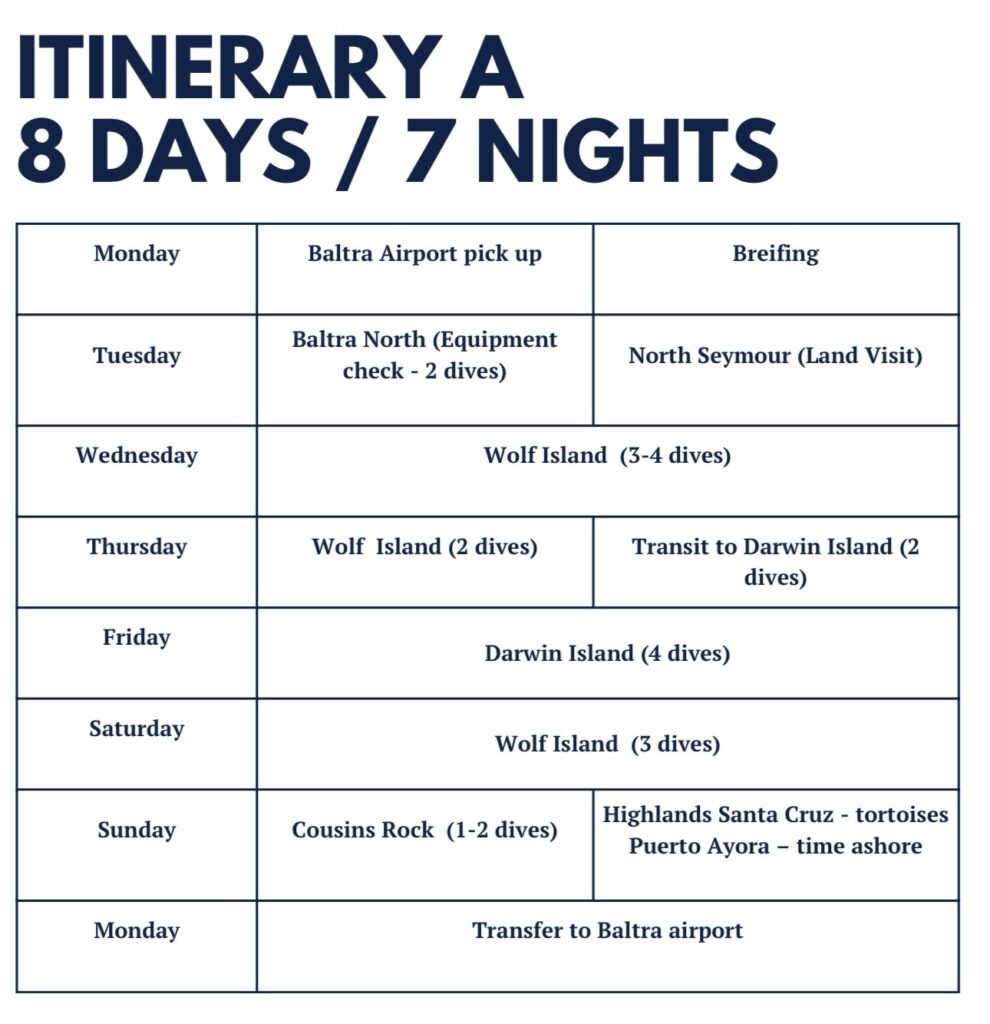
There were also a couple of day excursions on the itinerary. We were especially excited about visiting North Seymour island, as it supposedly had a vast animal life that we would see up close.
The day we left for our cruise, we were quite nervous to leave our boat at the anchorage for a week. We have only left her for three days on buoys a couple of times before, with local people managing the buoys looking after her.
We felt as prepared as we could be. We had stayed at the same spot for ten days, spending a lot of time on board in all types of conditions, to secure our anchor was solidly dug into the ground. We had also hired a local guy who worked at a local boat to look after our boat several times per day, and there were a couple of the neighboring sailors who volunteered to look after her as well. The sailing community is awesome like that, people look after each other in a very caring way.
We made the transfer by taxi from the bay in the South where we were anchored, to the northern part of the island, where our cruise ship was waiting for us. The ship had a total capacity of 16 guests, distributed on 8 cabins, and had a crew of 9, plus 2 dive instructors. The boat had been refurbished in 2020, and we were happy with both our cabin and the other accommodations.
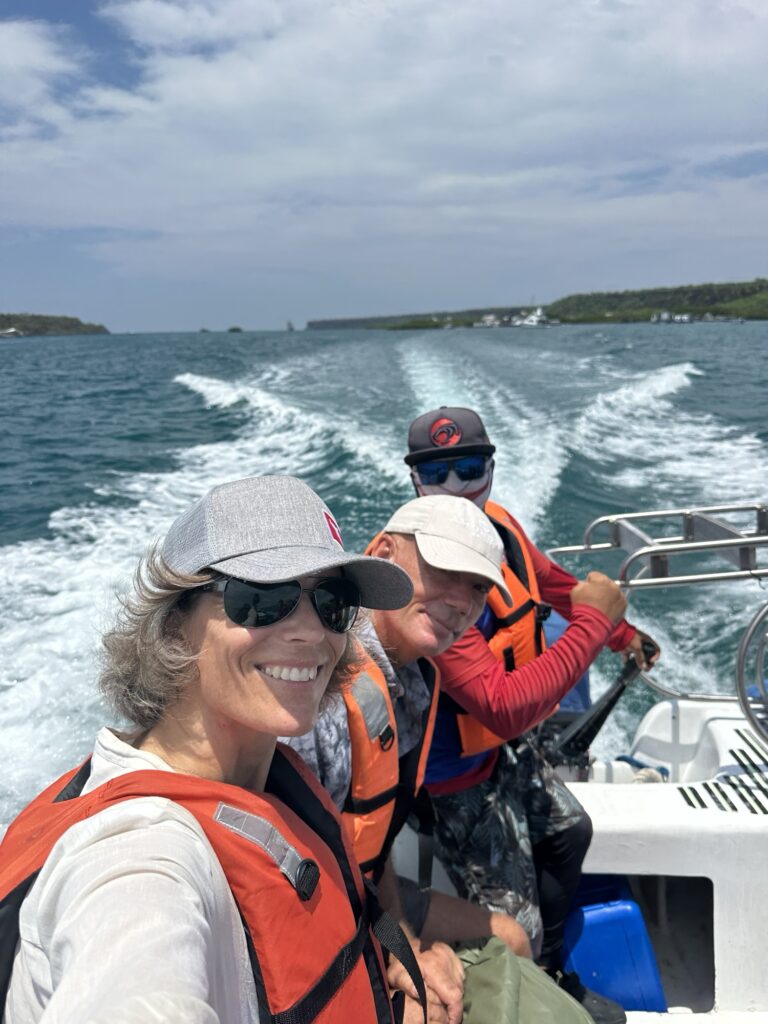
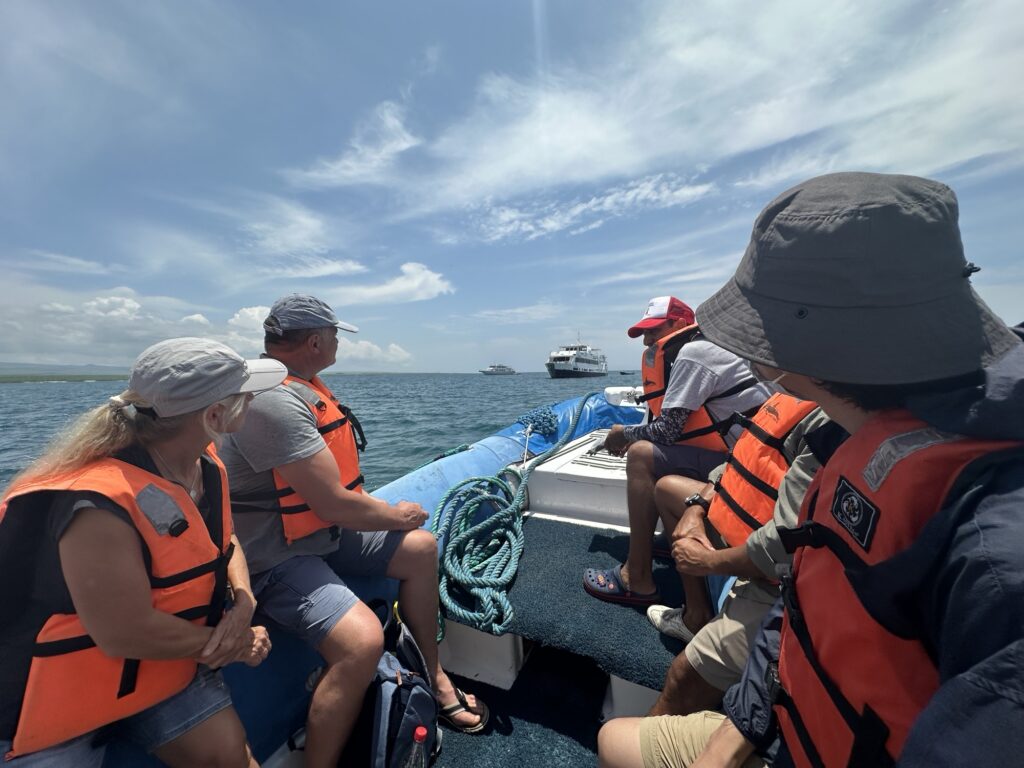
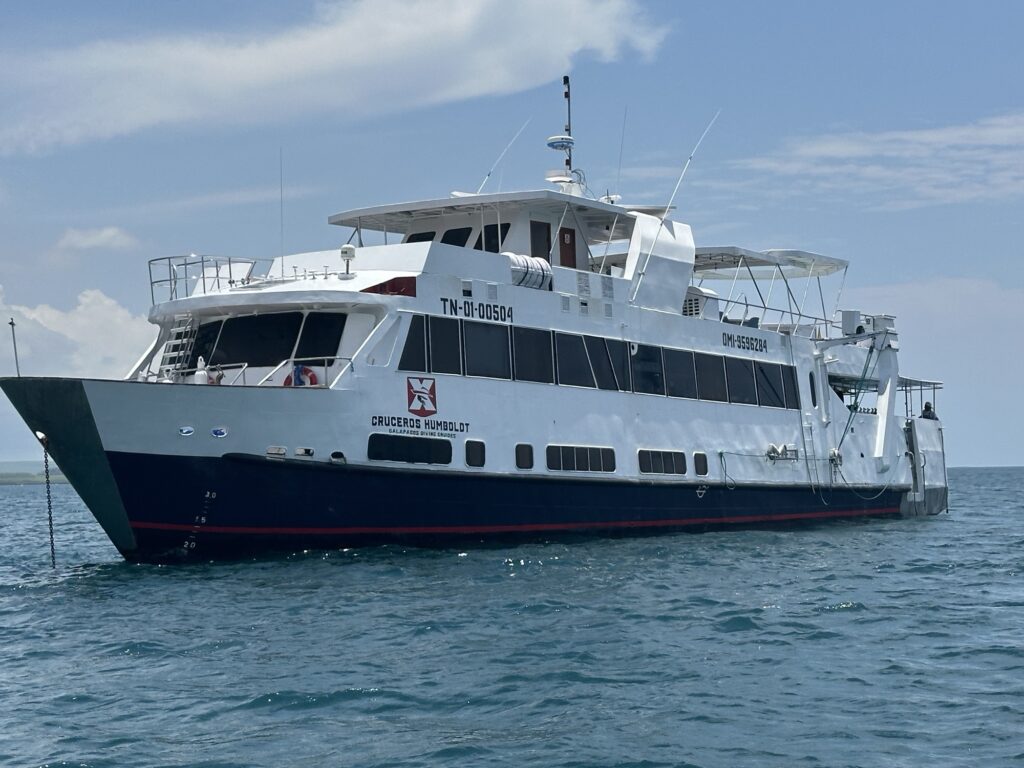
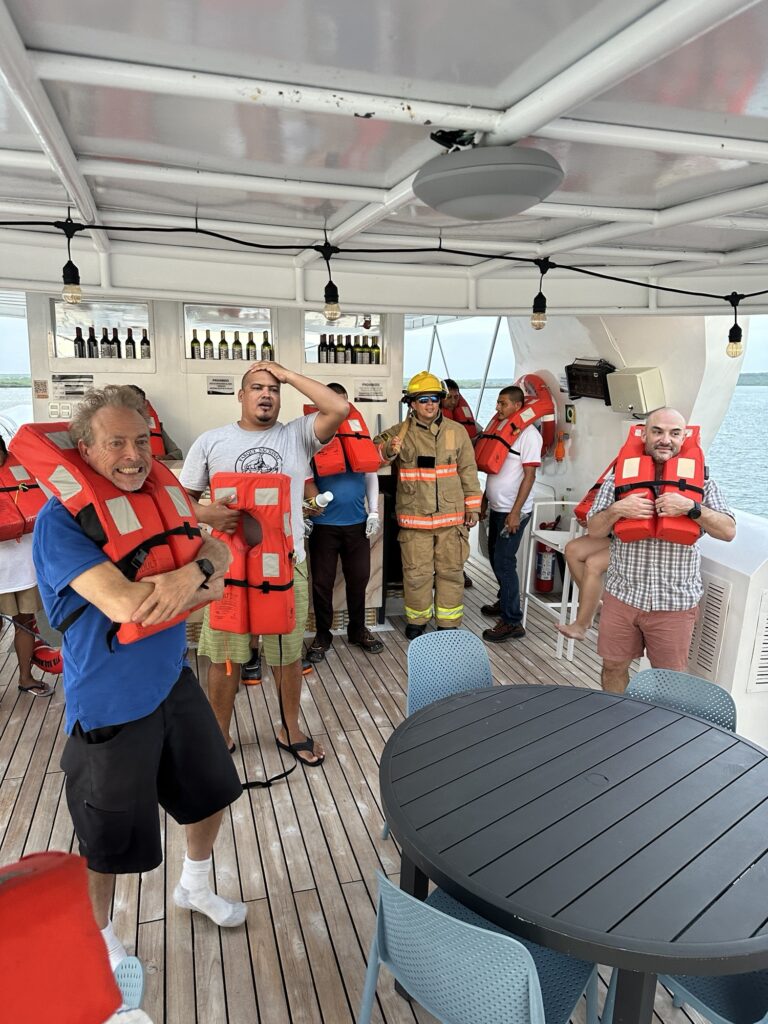
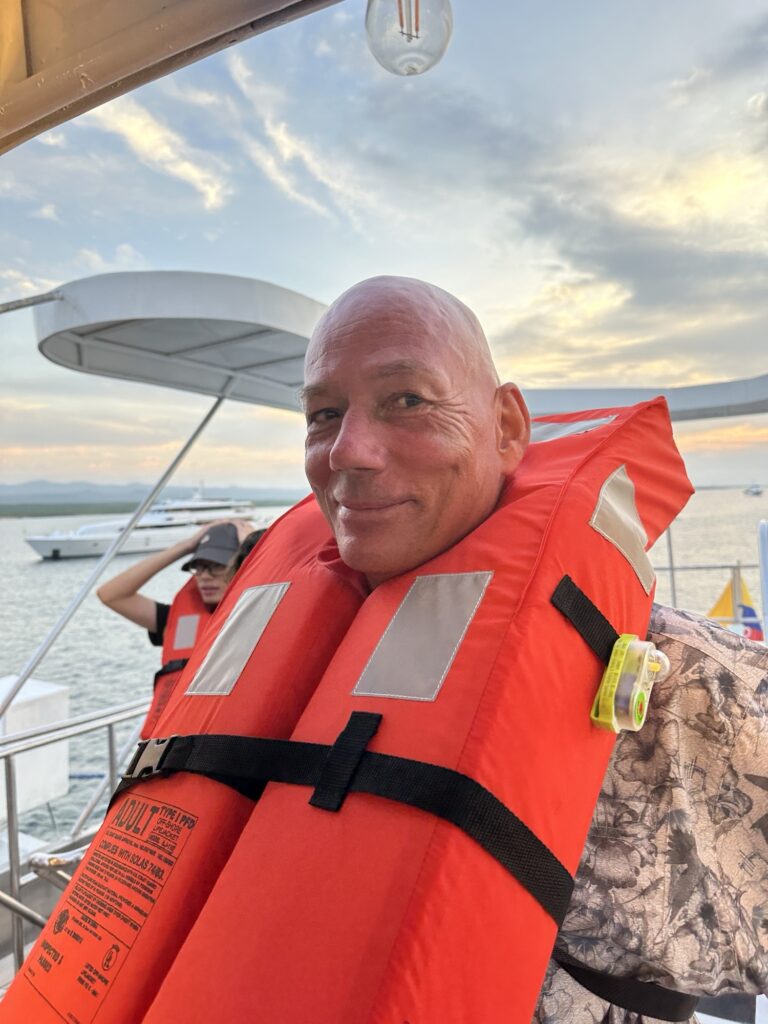
All of the guests gathered for a lovely lunch, and we quickly learned that there was an international and diverse group who were going to spend the next week together:
– 4 Germans: one couple, and two single ladies
– 3 Brazilians: a father and two sons from Rio de Janeiro
– 3 Norwegians: us and a single lady
– 3 Americans: a couple from Vermont and a single man from the Bay Area
– 1 Dutch: a single man
– 1 Japanese: a single lady from Tokyo
– 1 Chinese: a single man from Guangzho
The age range ran from late 20s until late 70s, and all were experienced divers, as one needs to have at least 50 dives to attend this trip. Diving in Galapagos can be quite difficult, as the currents are strong and change rapidly.
North Seymour Island
After a couple of dives to test the gear and our capabilities, we headed off for a land tour before we were heading north, across the Equator (again for us).
North Seymour island has no people living there, and the animals can roam freely. This provides the opportunity to really come up close to them. We were there for the frigate bird mating season, so we finally got to see the red blown up chest of the male, which we have been so curious about.
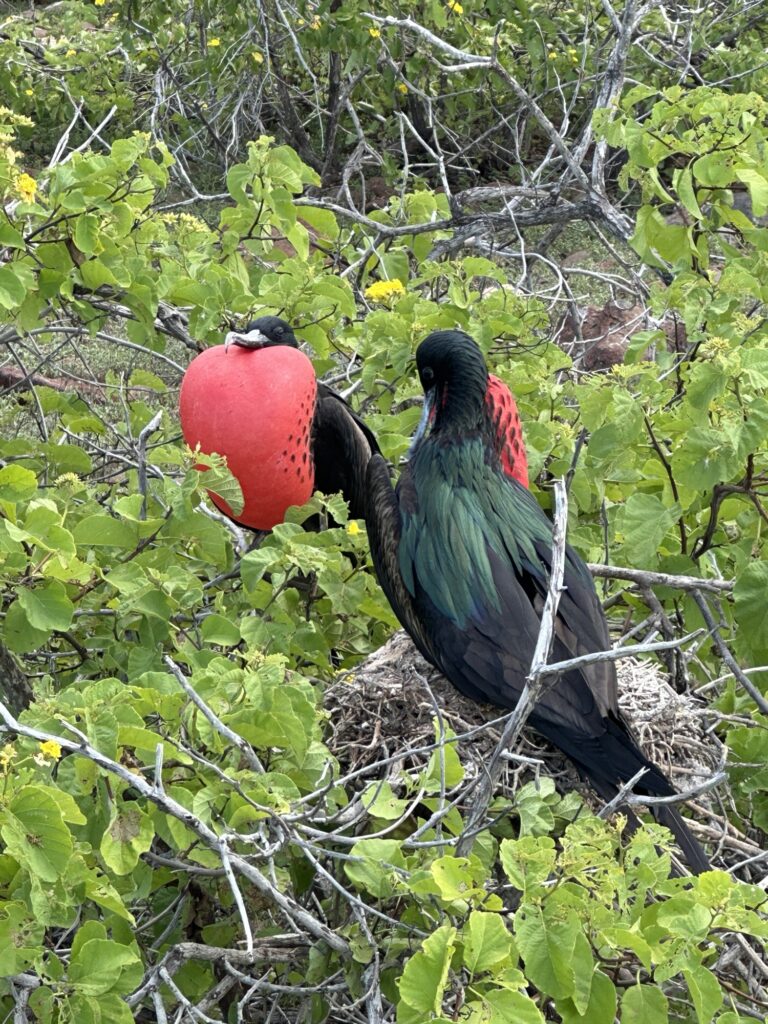
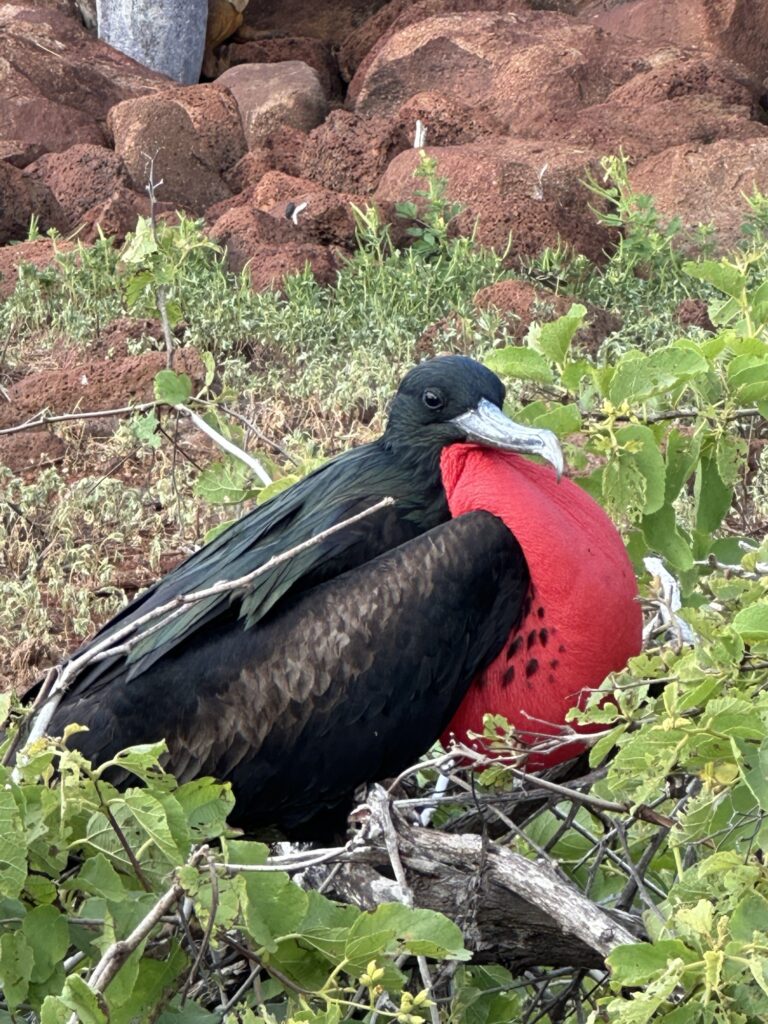
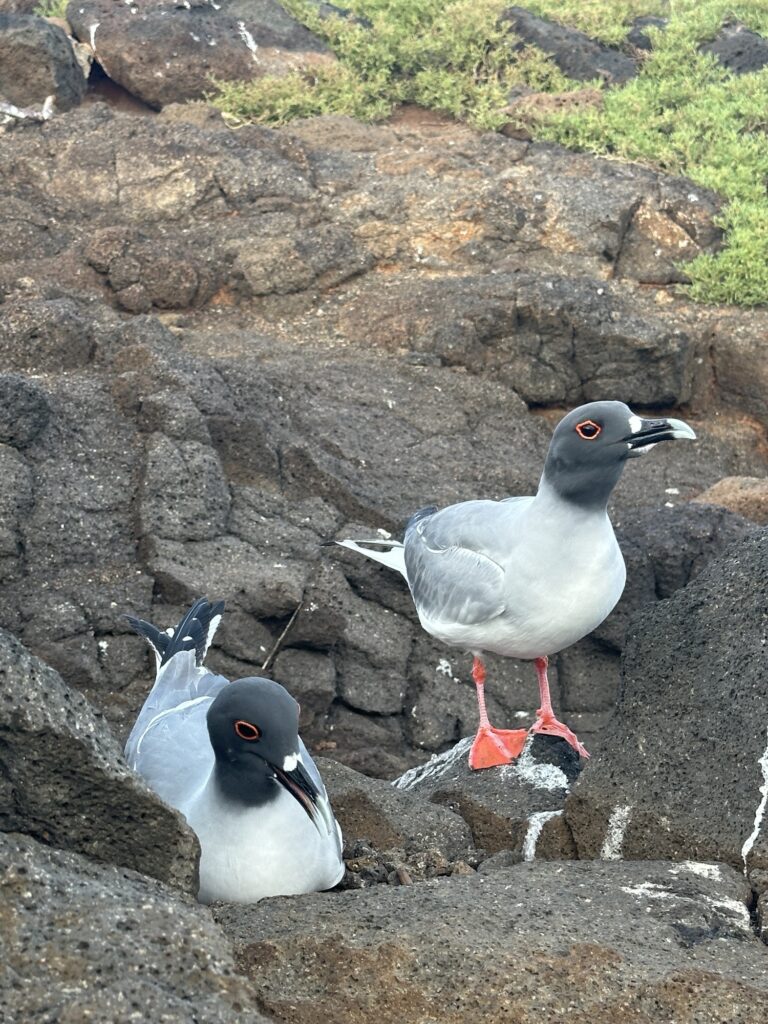
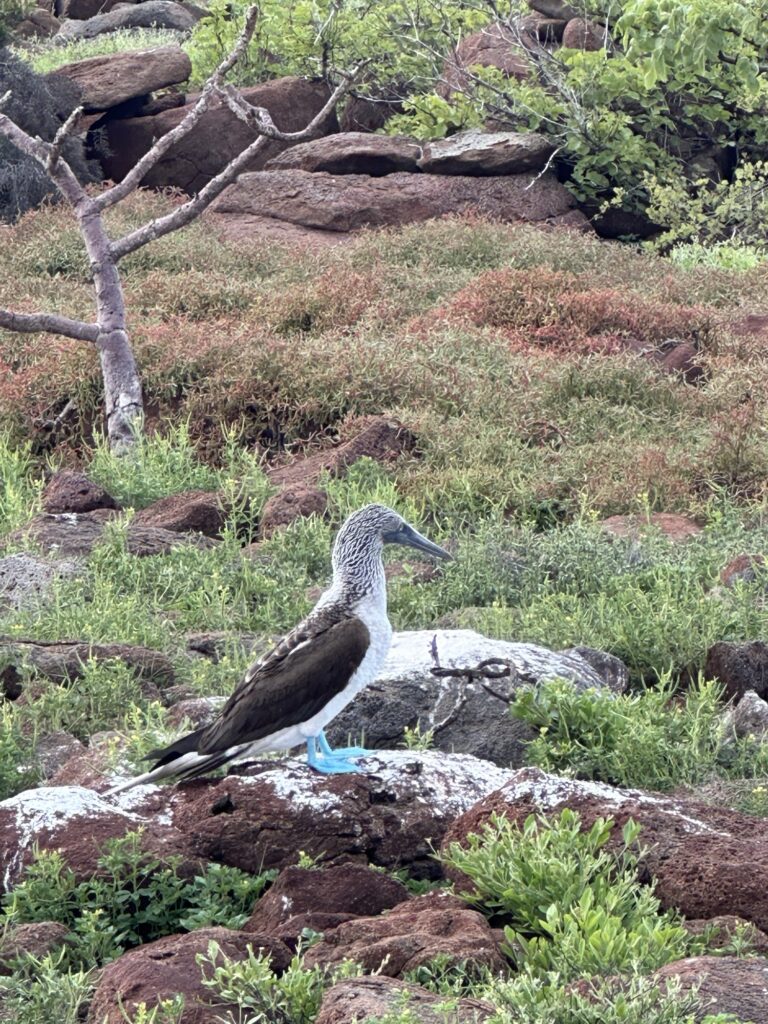
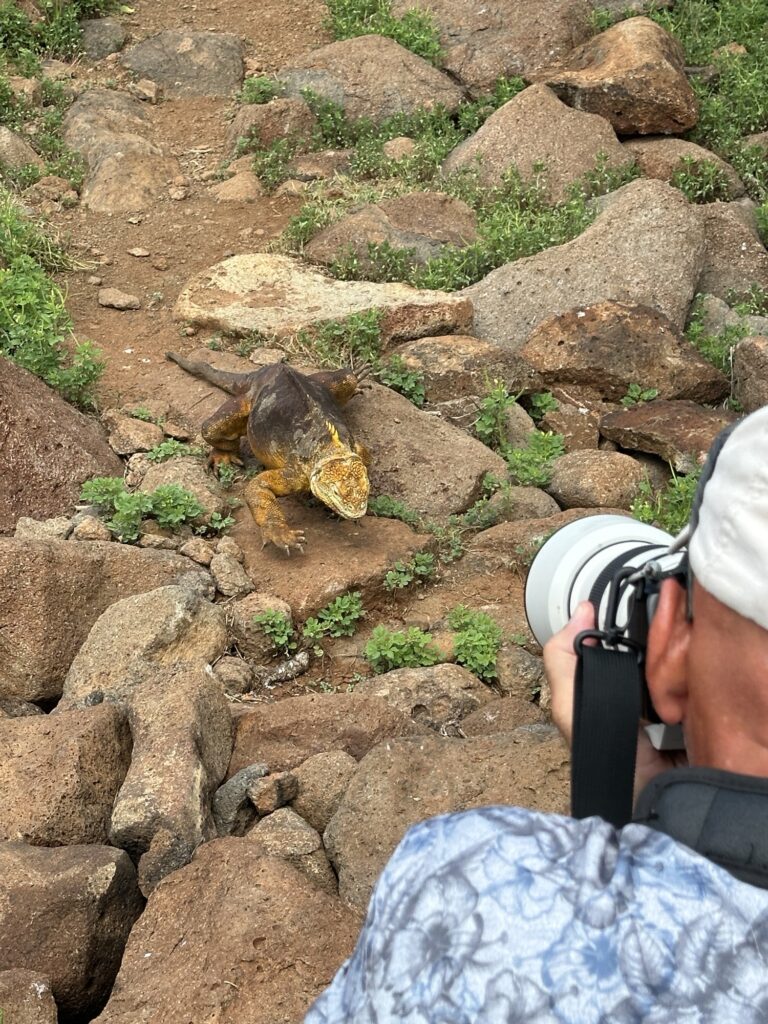
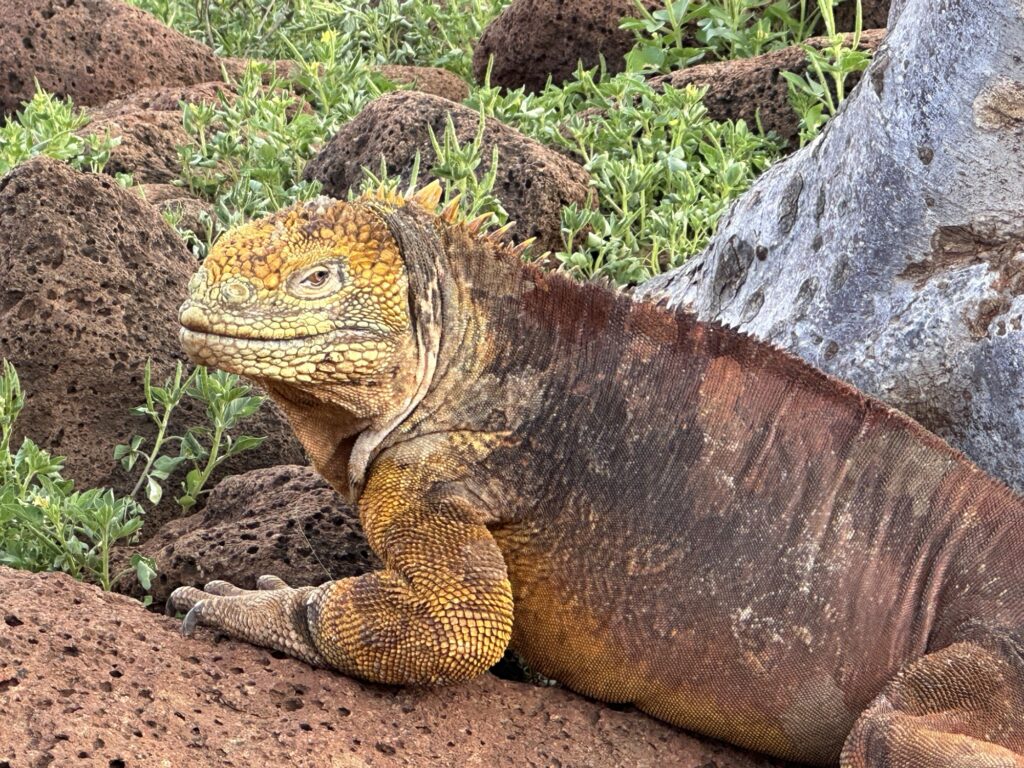
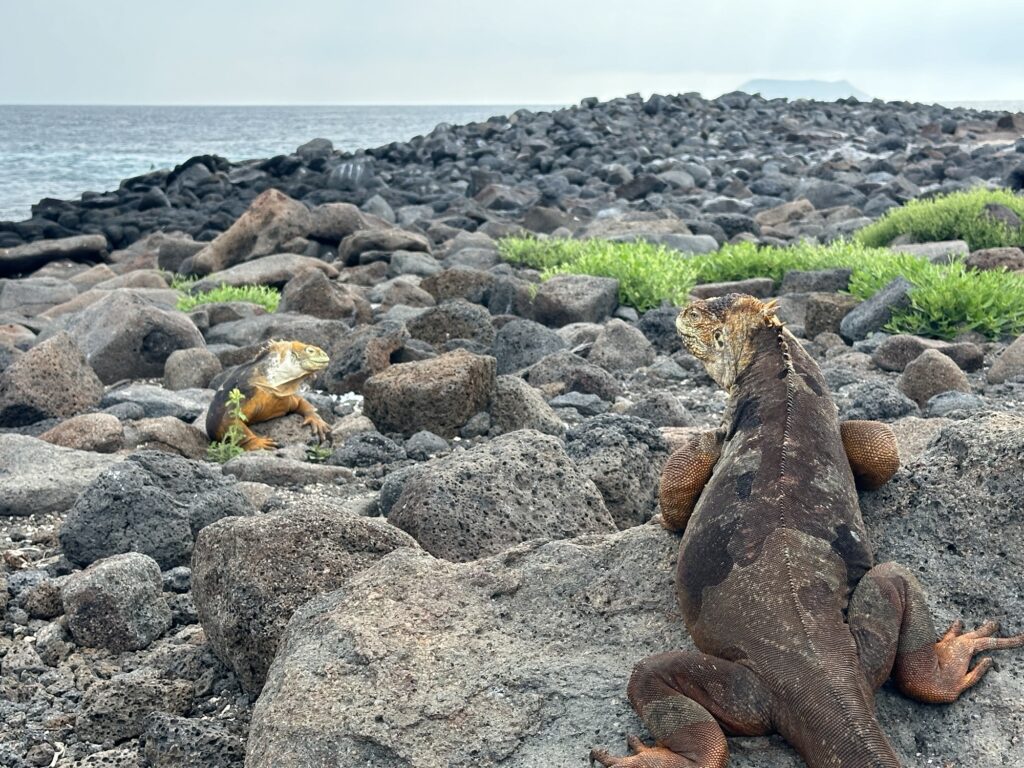
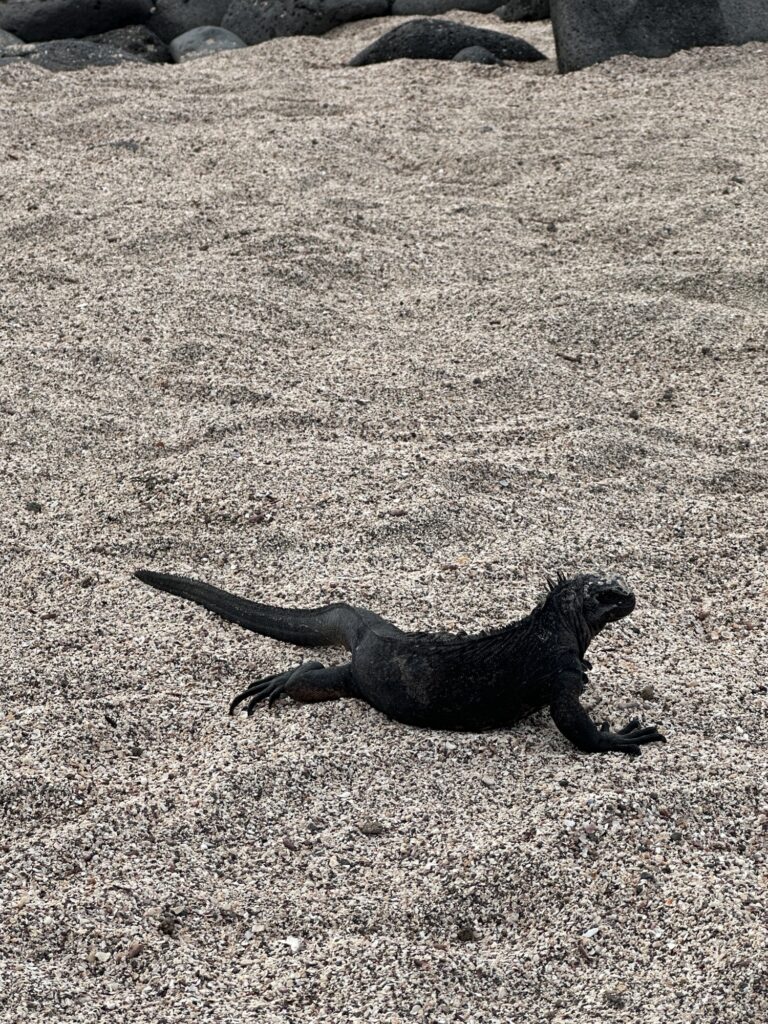
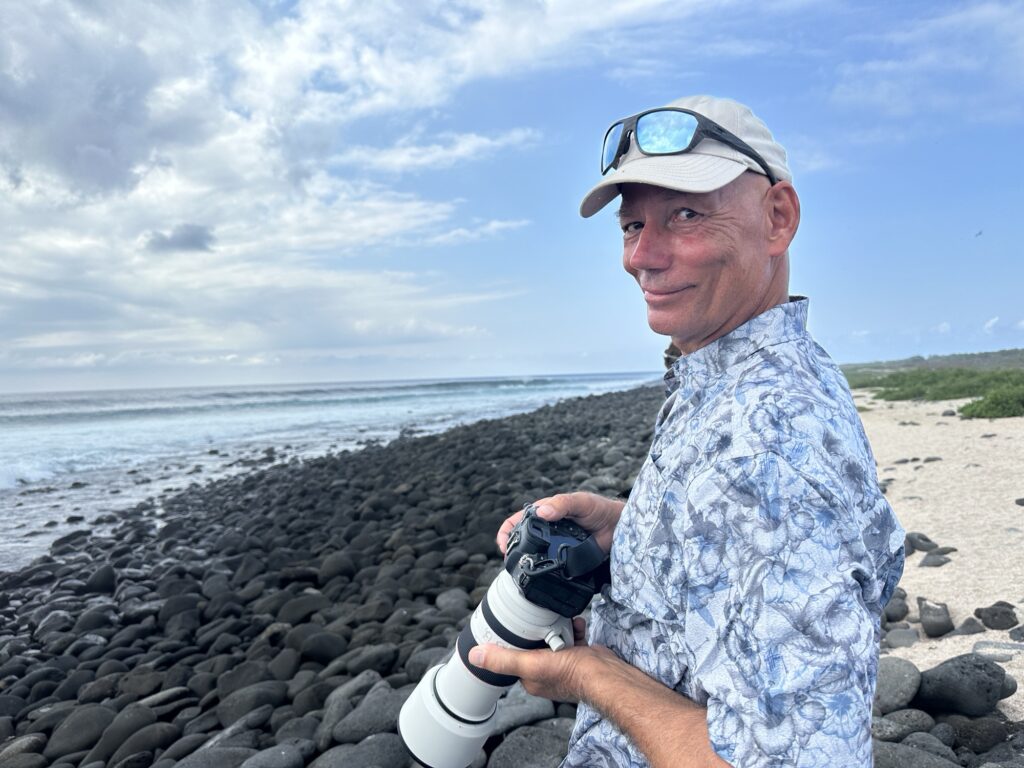
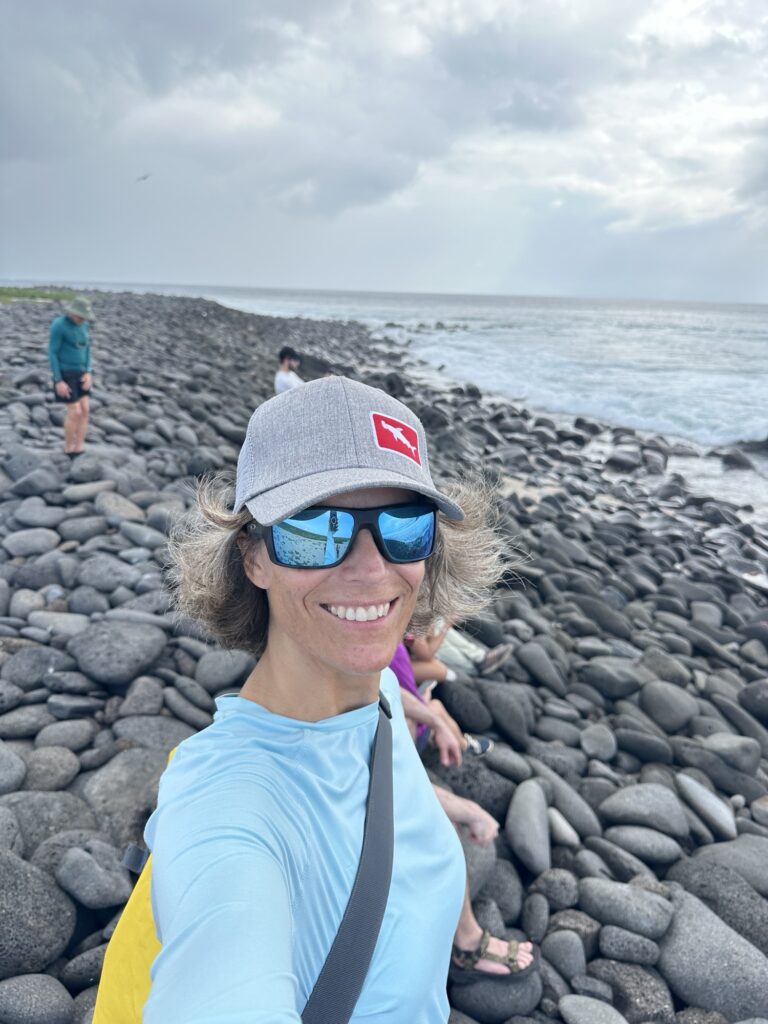
This was in fact Bruse’s birthday, and the crew had prepared a beautiful birthday cake for dinner the same evening 🥰
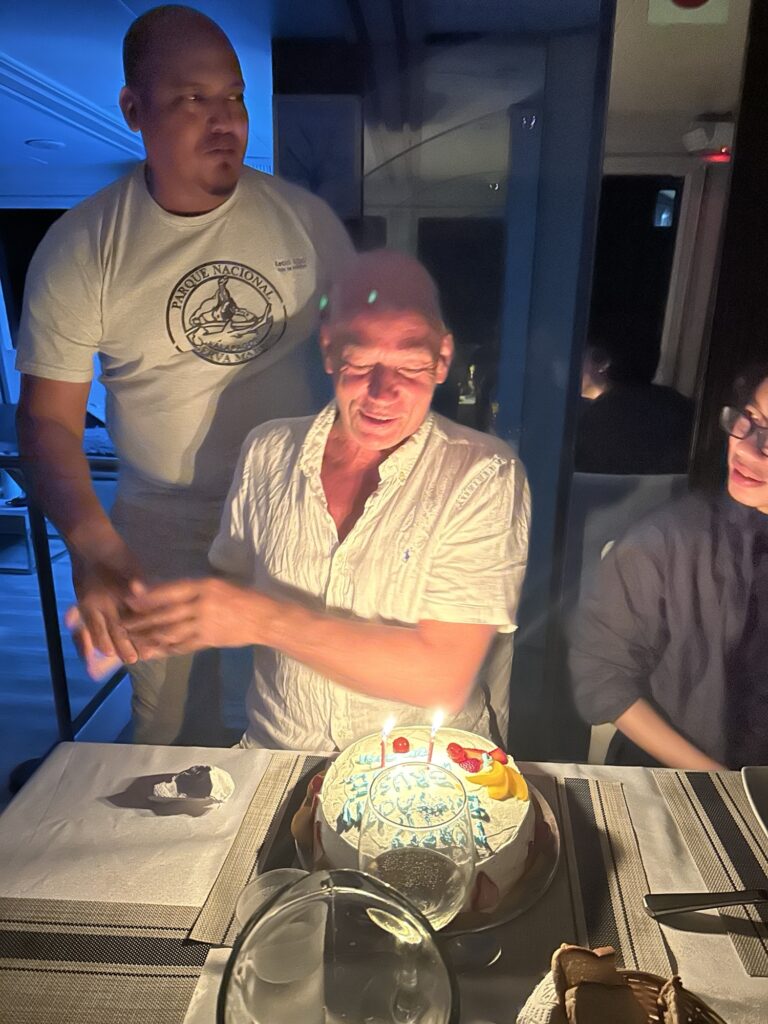
Wolf Island
We arrived to our first dive destination, Wolf Island, on the morning of day 3, after an overnight sail of a little more than 100nm. The volcanic island was truly magnificent, as it was it raised high from the sea, with cliffs all around it.
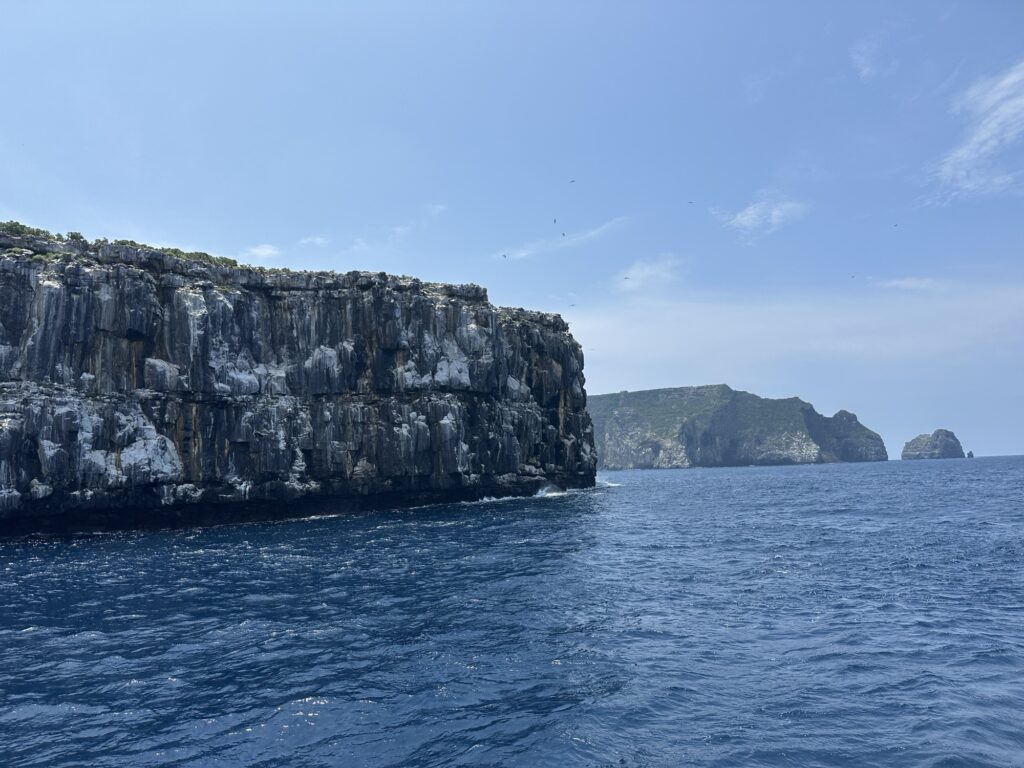
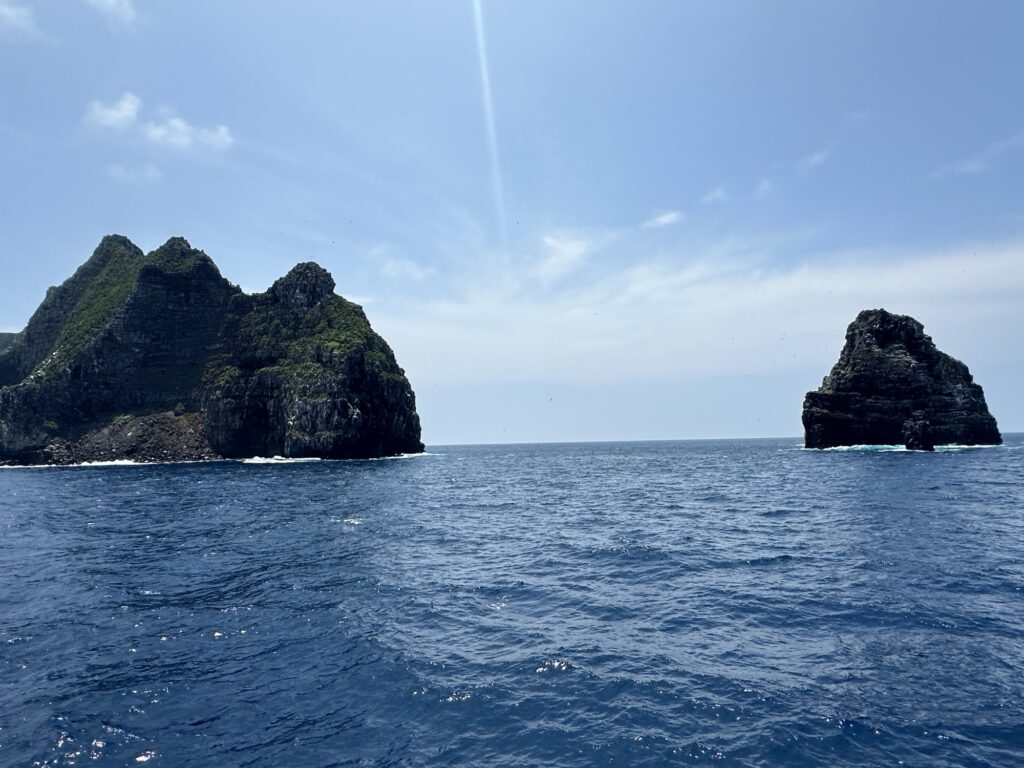
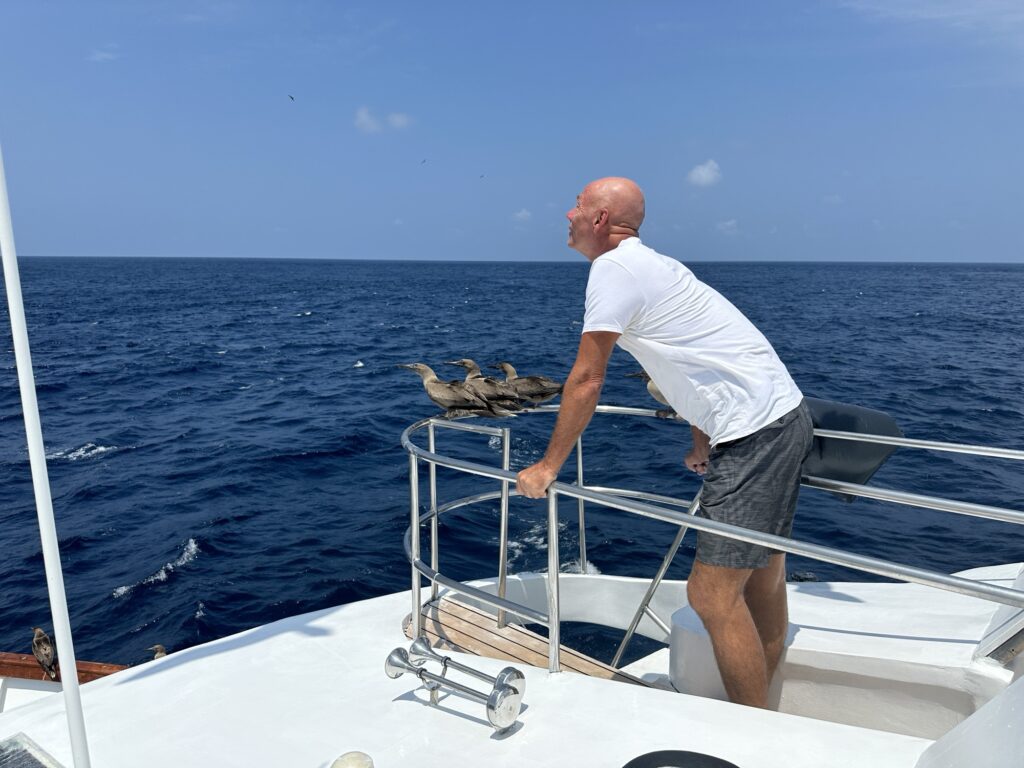
There are walls to dive on in several areas around the island, as well as a landslide giving a natural slope under water. The schedule of the day was presented to us right after breakfast, and it was definitely a jam packed itinerary that would keep us busy the full day.
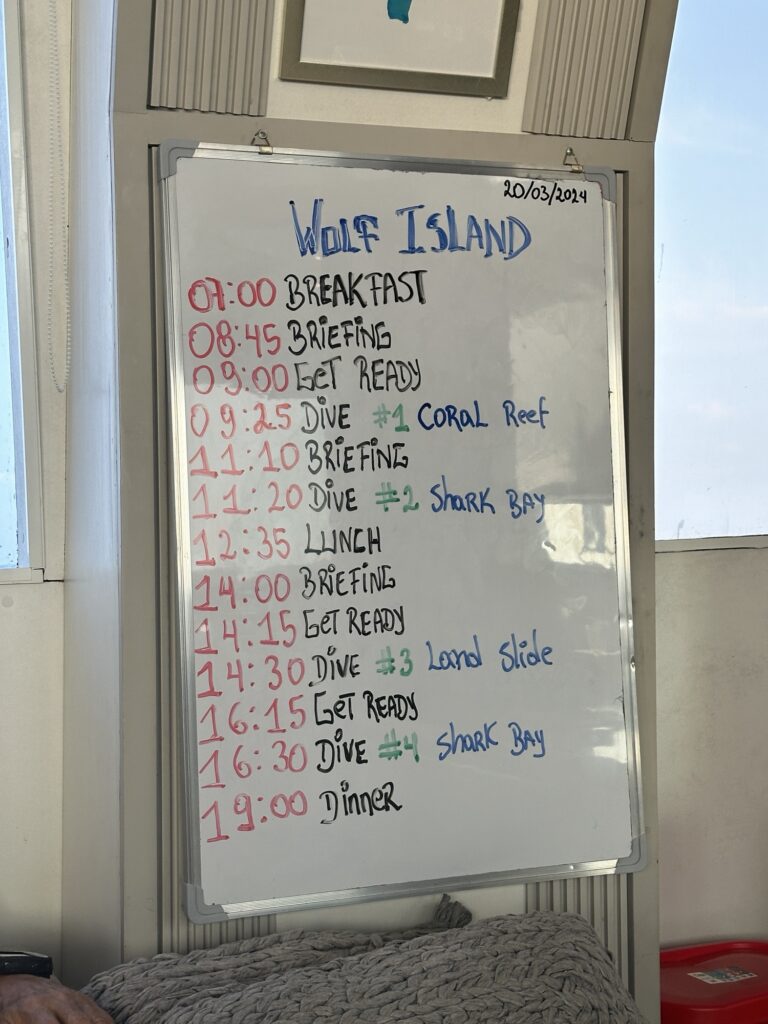
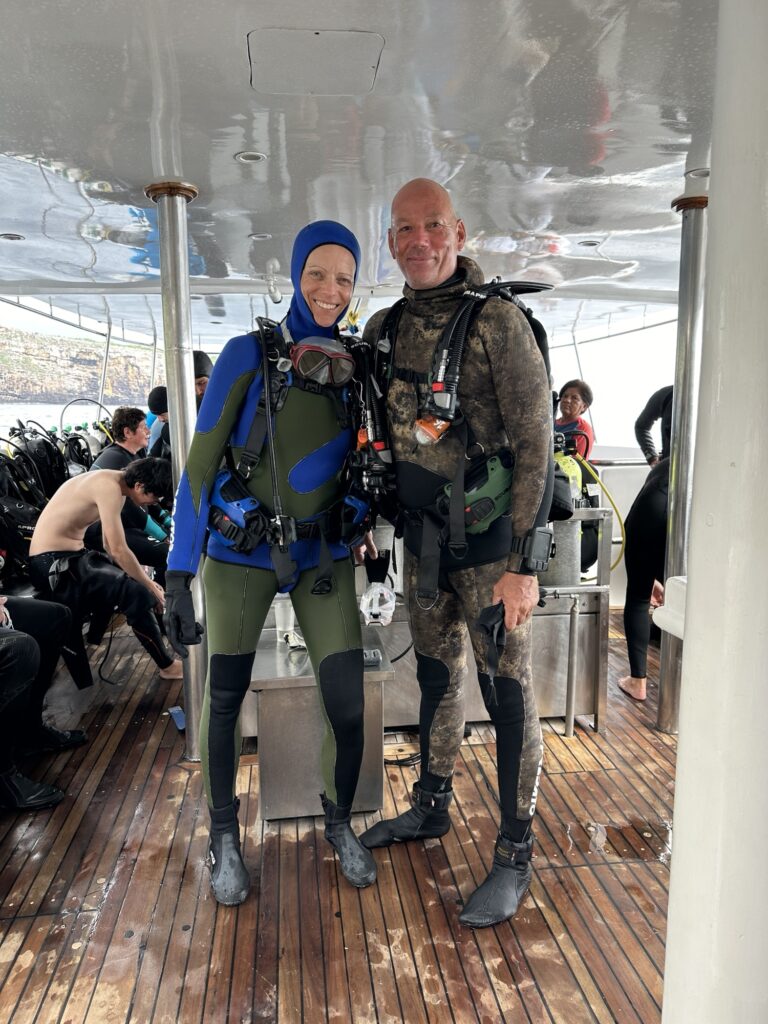
We had a total of four dives this first day, and it soon became clear that we were in diving paradise. We saw several sharks on each dive; hammerheads, Galapagos sharks and white and Oceanic black tip sharks.
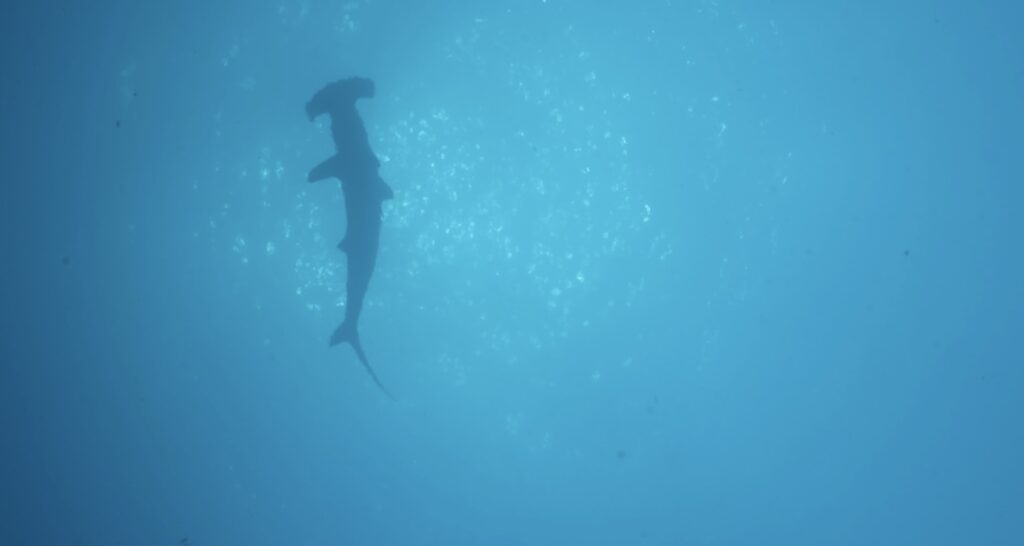
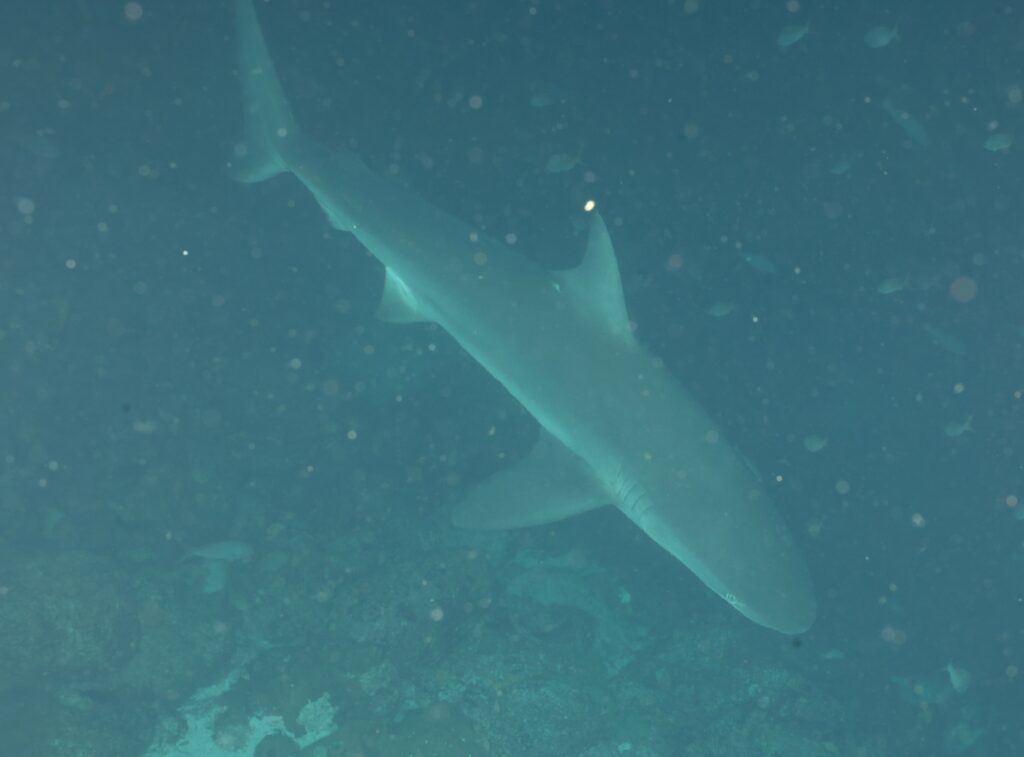
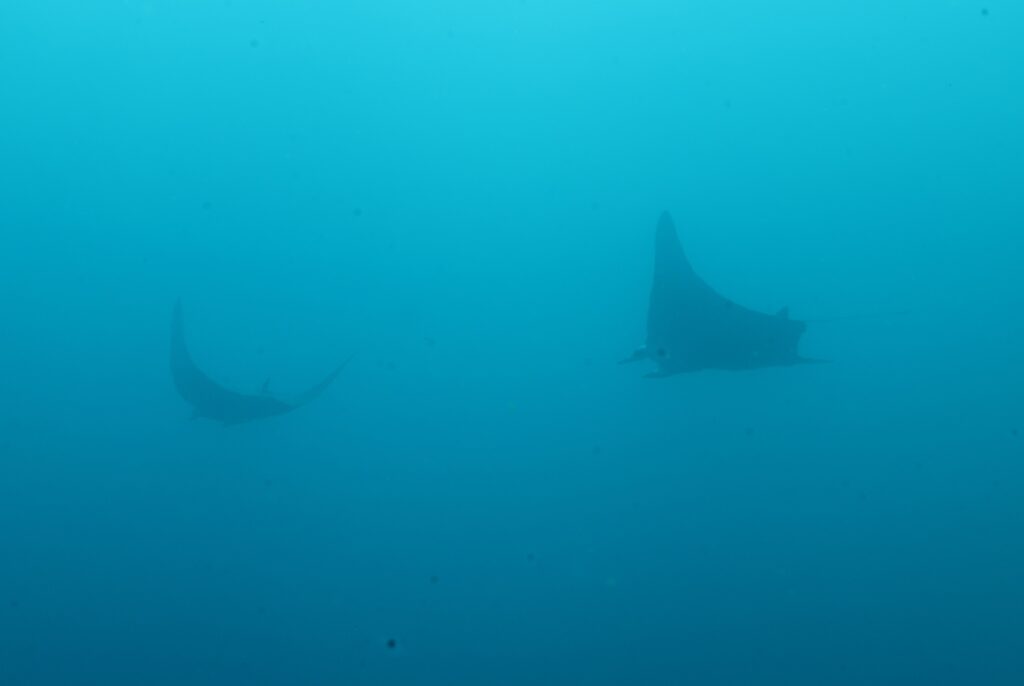
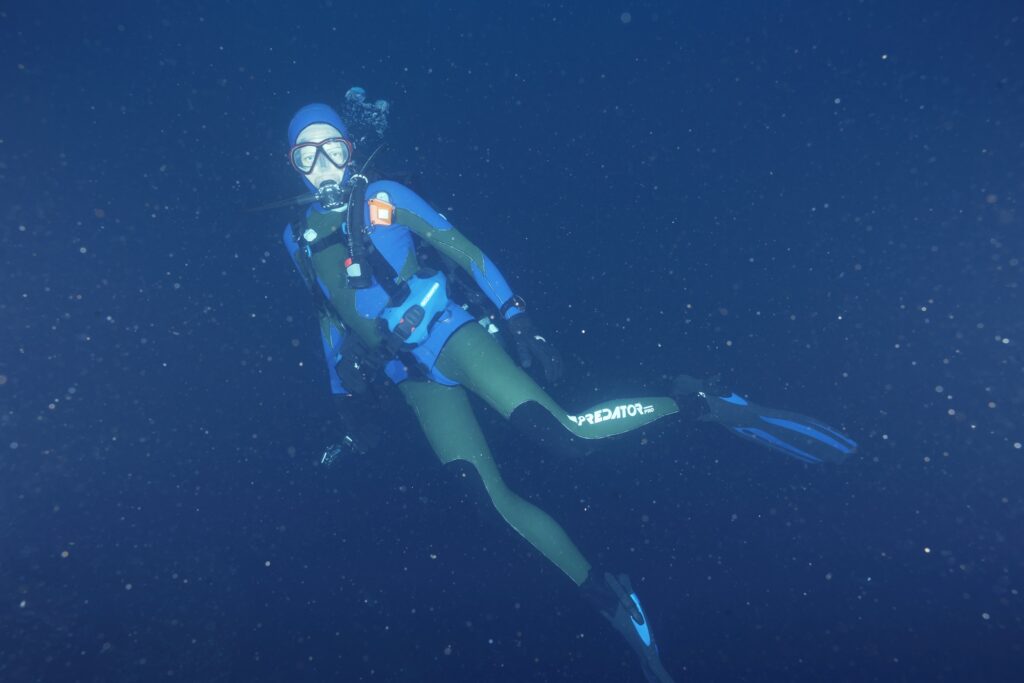
We had a total of 9 dives at Wolf island, 6 on the way north and 3 on the way back south.
On the last day on our way South, we met a huge school of hammerhead sharks on our safety stop. Several hundreds of them were circling us as we were hovering in the blue. One of those experiences that really makes you in awe.
Considering that Carine had a little fear of hammerheads after seeing a hyped up nature show at the age of 12, we could definitely ascertain that she was rid of the fear now.
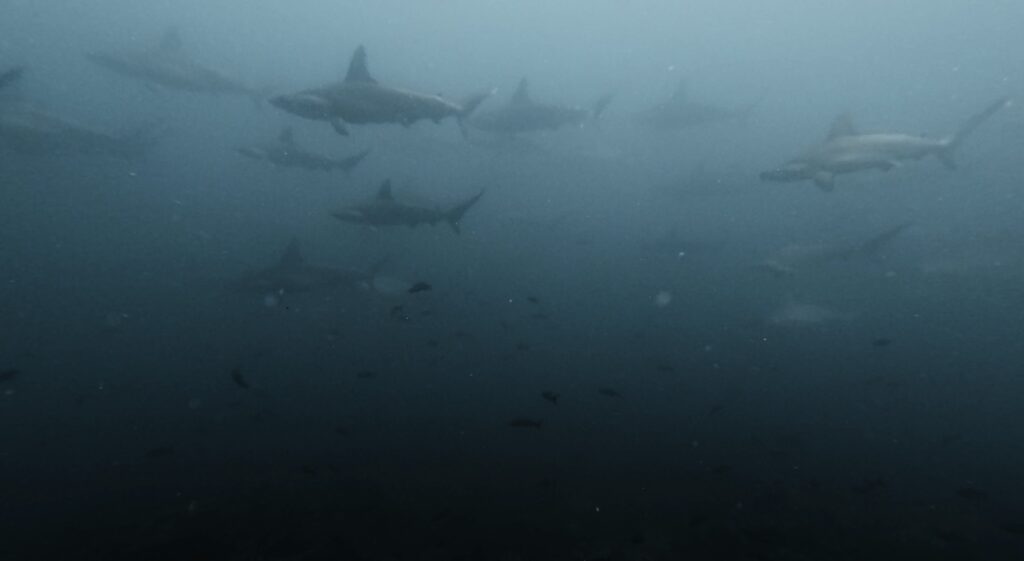
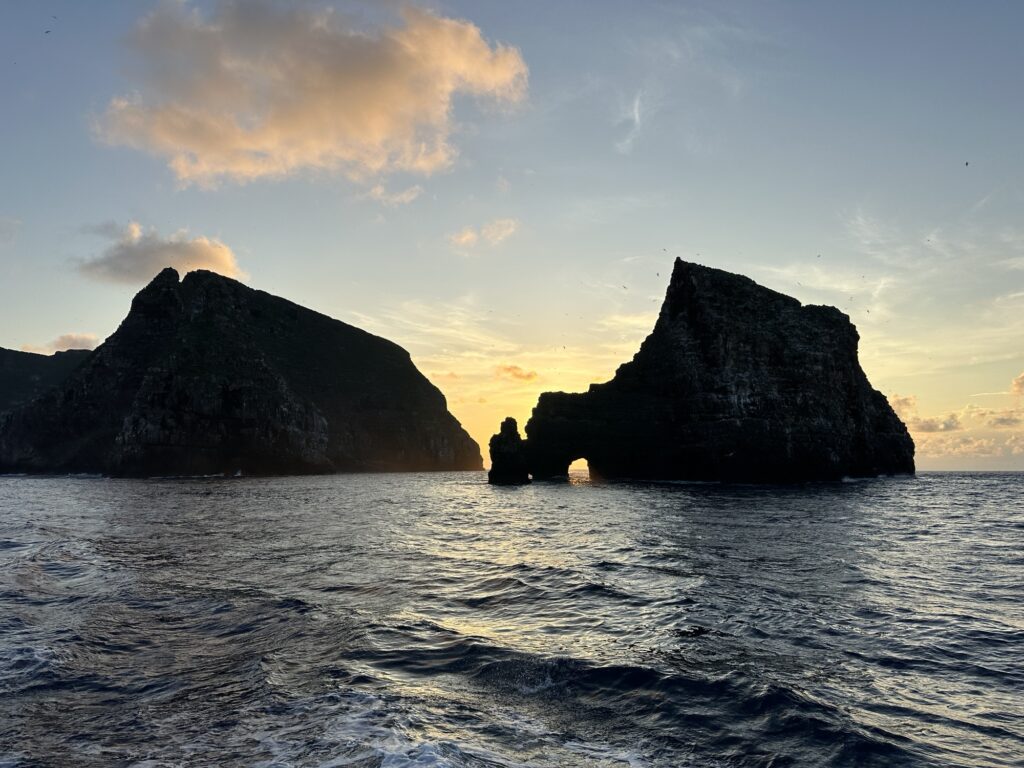
Darwin Island
Darwin island was equally beautiful and impressive as Wolf island. It also is raised high and sharp from the ocean, making landfall impossible from the sea. It is actually illegal for anyone, except scientists, to visit both islands, and they arrive by helicopter, which is the only way to gain access.
We had a total of 6 dives at Darwin island over two days. All of the dives take place at a location called Darwin’s Pillars, located south of the main island.
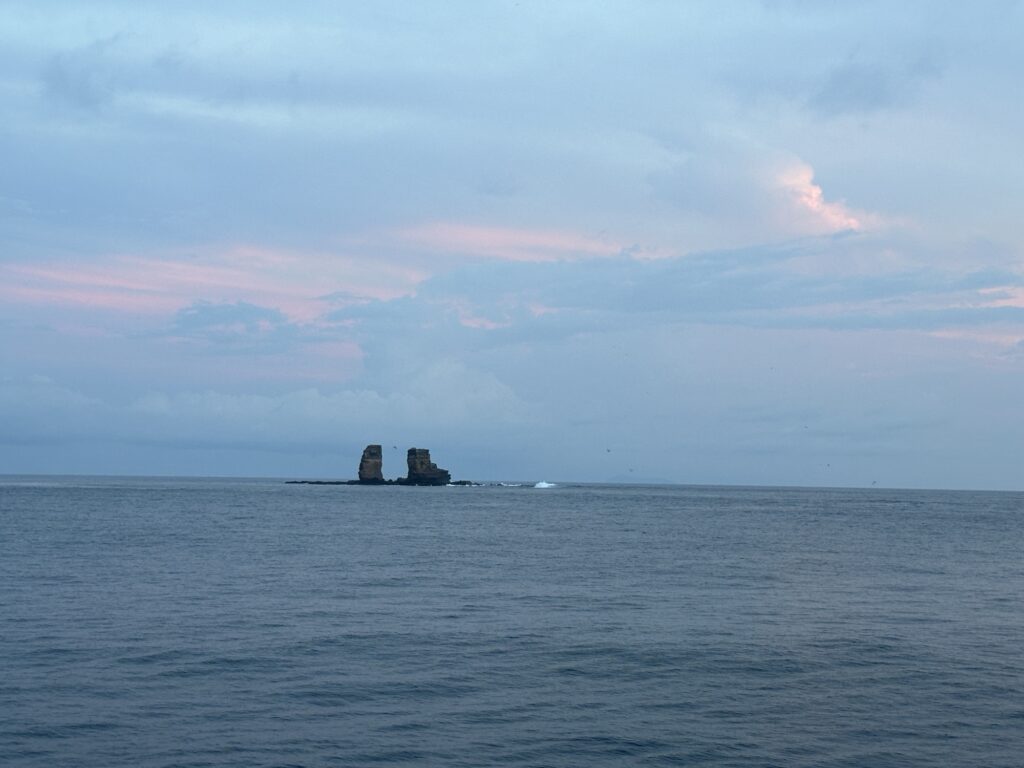
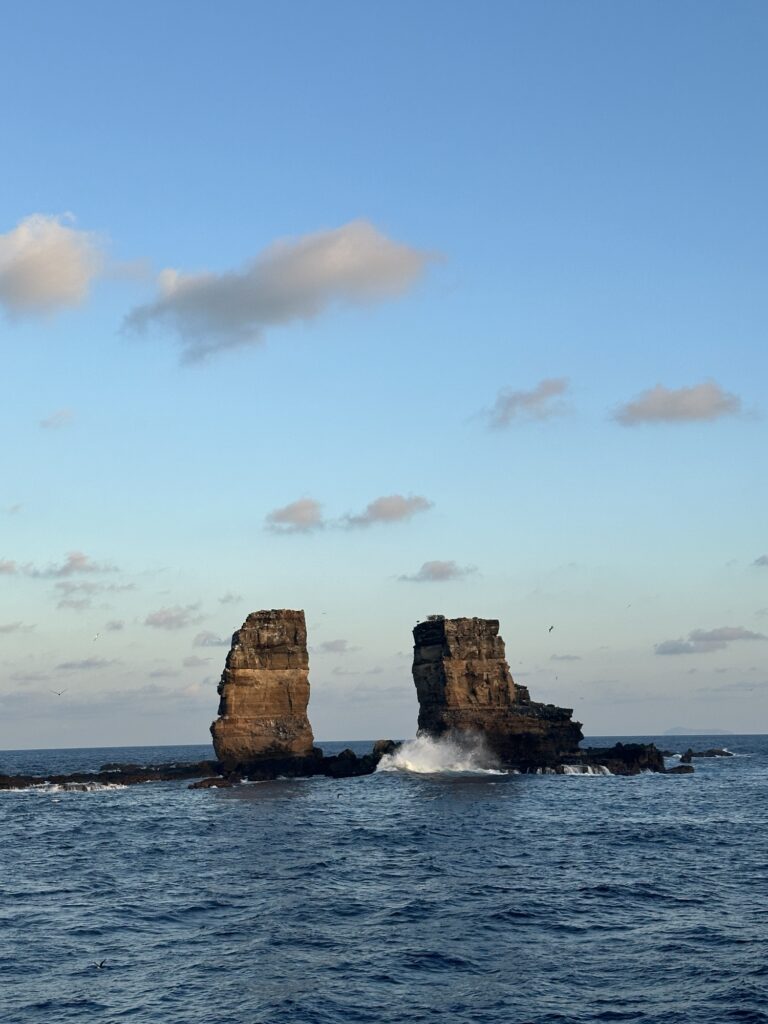
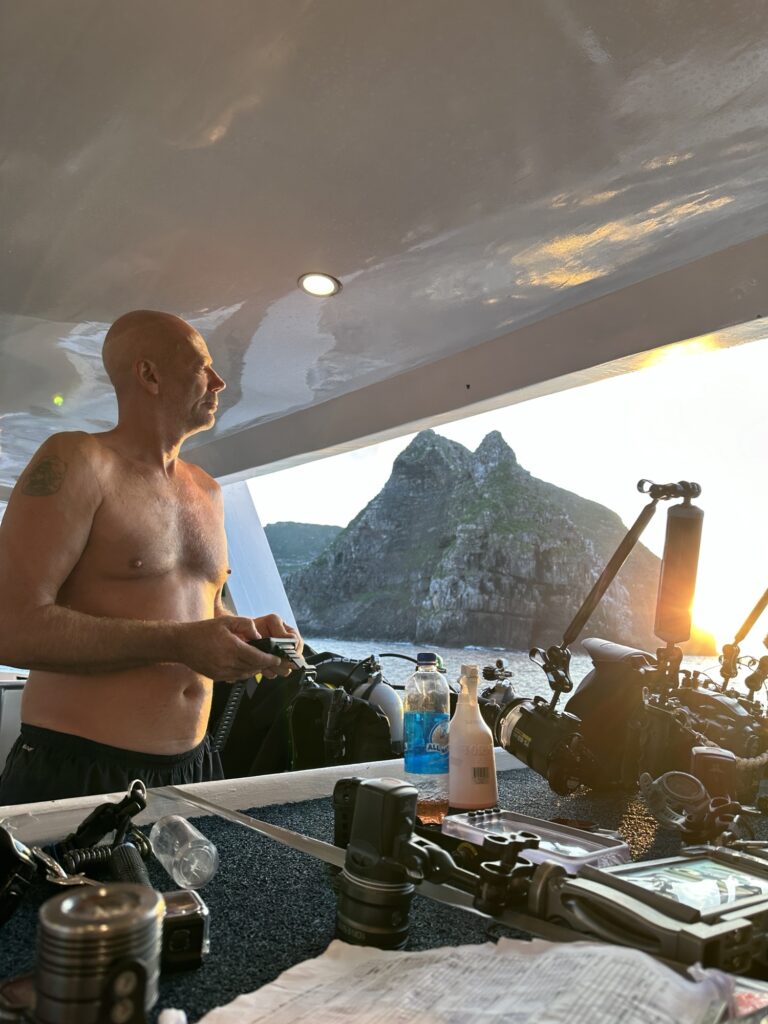
We again had some amazing dives, with lots of diversity, even if we did get dropped on the same spot, more or less. The currents took us in different directions, and the surprise was quite big when our group ended towards the far north end of the island after a dive, while the other group dropped right after us in the same location, ended up on the South side.
This really shows how important it is that only experienced divers do a trip like this. The currents are strong, the visibility sometimes not too good, and getting away from your buddy as well as your dive group, is a real threat. We were all equipped with our personal rescue devices to draw attention on the surface as well as sending our location to the ship.
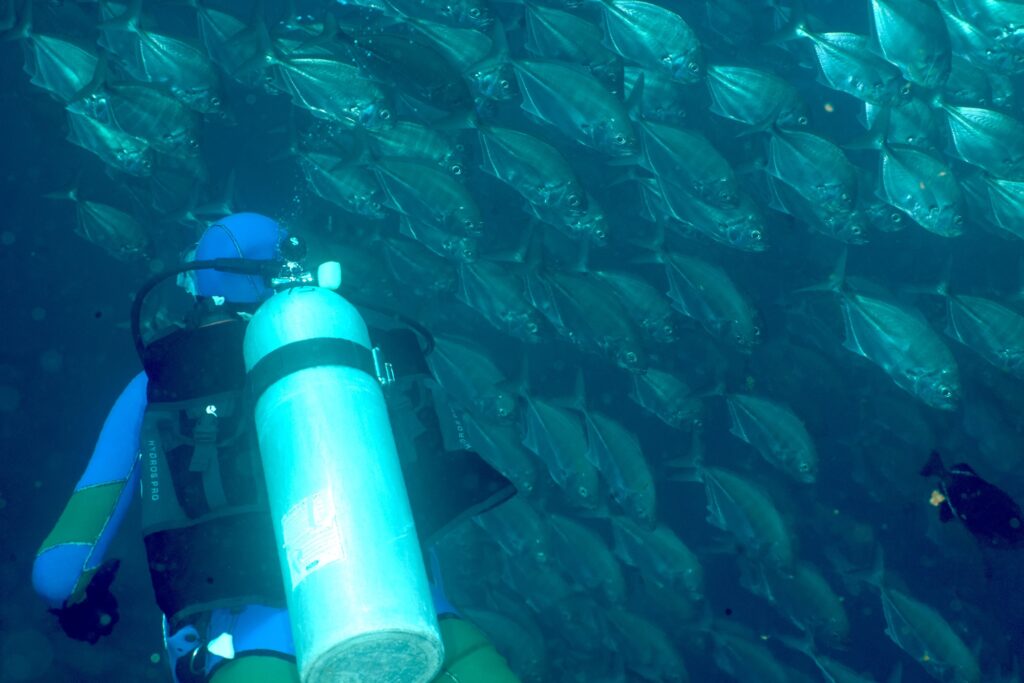
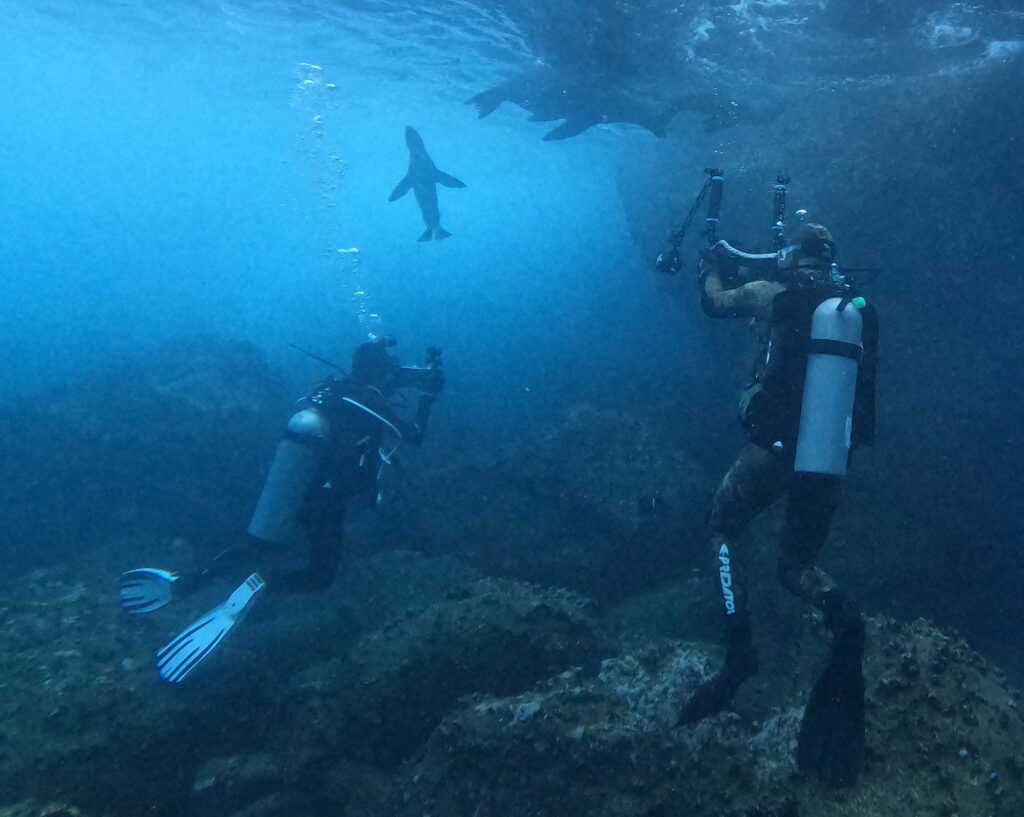
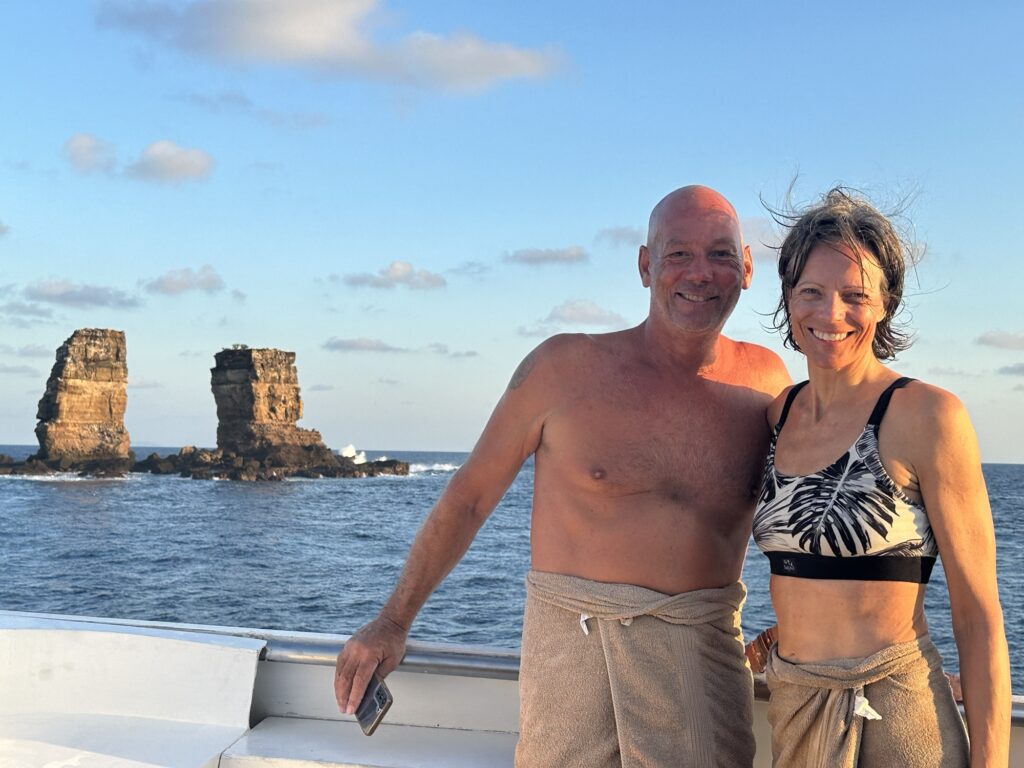
The food on the boat was diverse and delicious! We got very well fed, and were so impressed by all of the crew on the ship. They had a real teamwork going, with everyone getting involved all of the time, like the chef wearing his cooking uniform every day giving us a hand as we entered the zodiac wearing heavy dive gear, and the captain unzipping the back zipper of the wetsuits as we returned from dives.
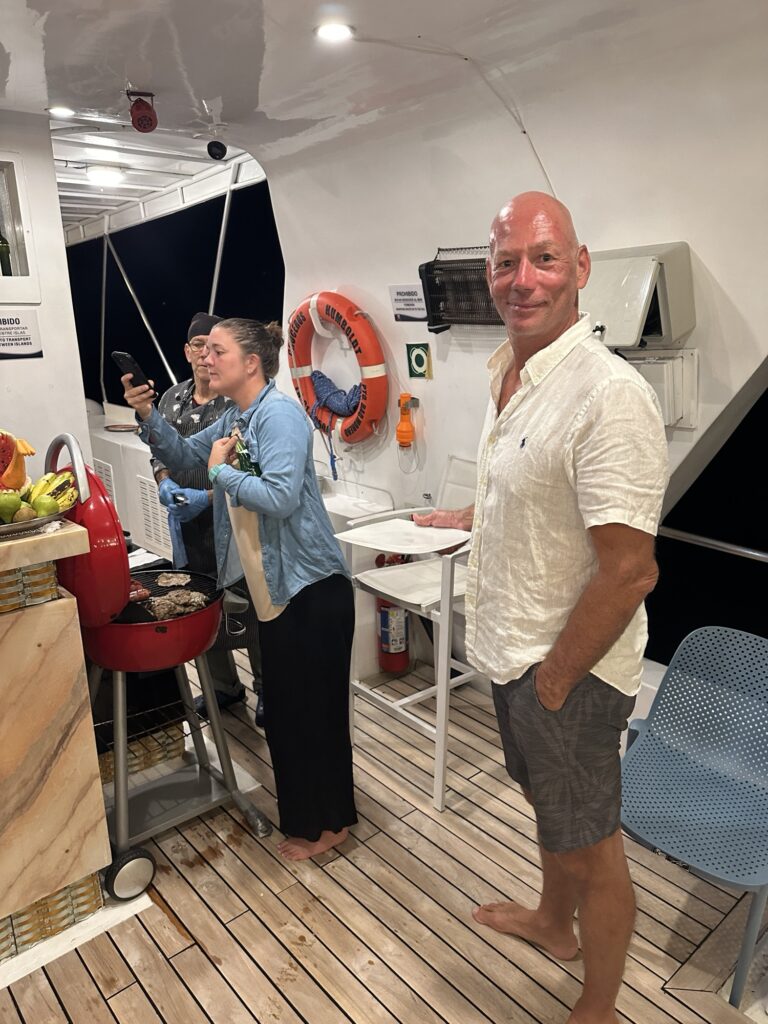
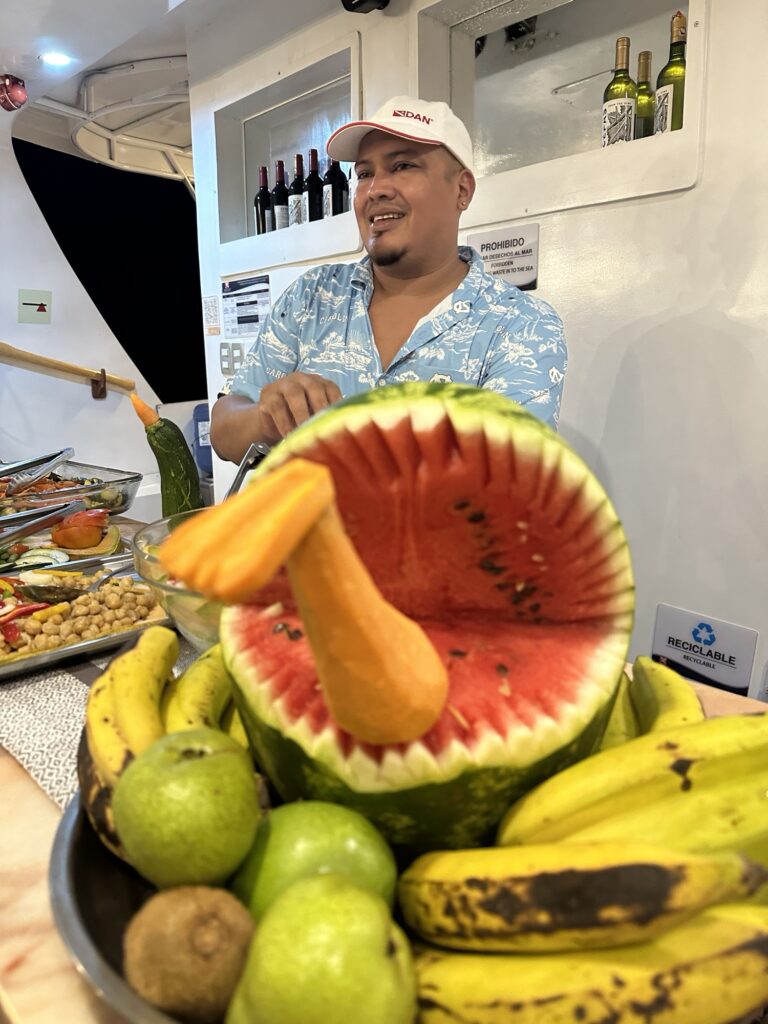
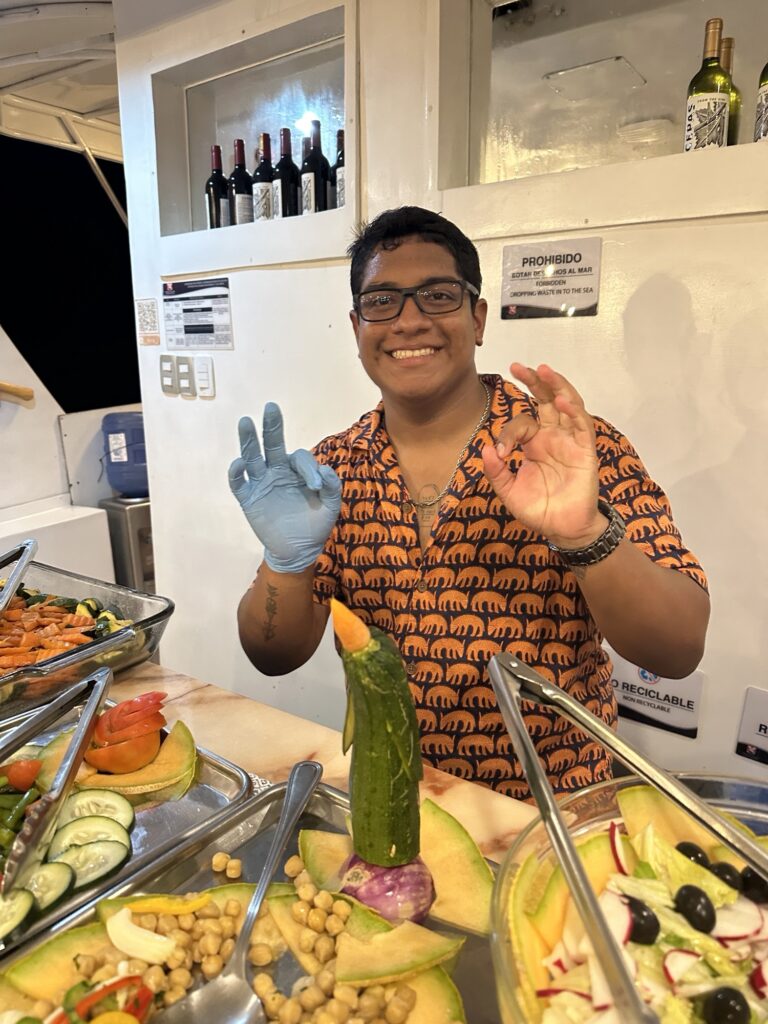
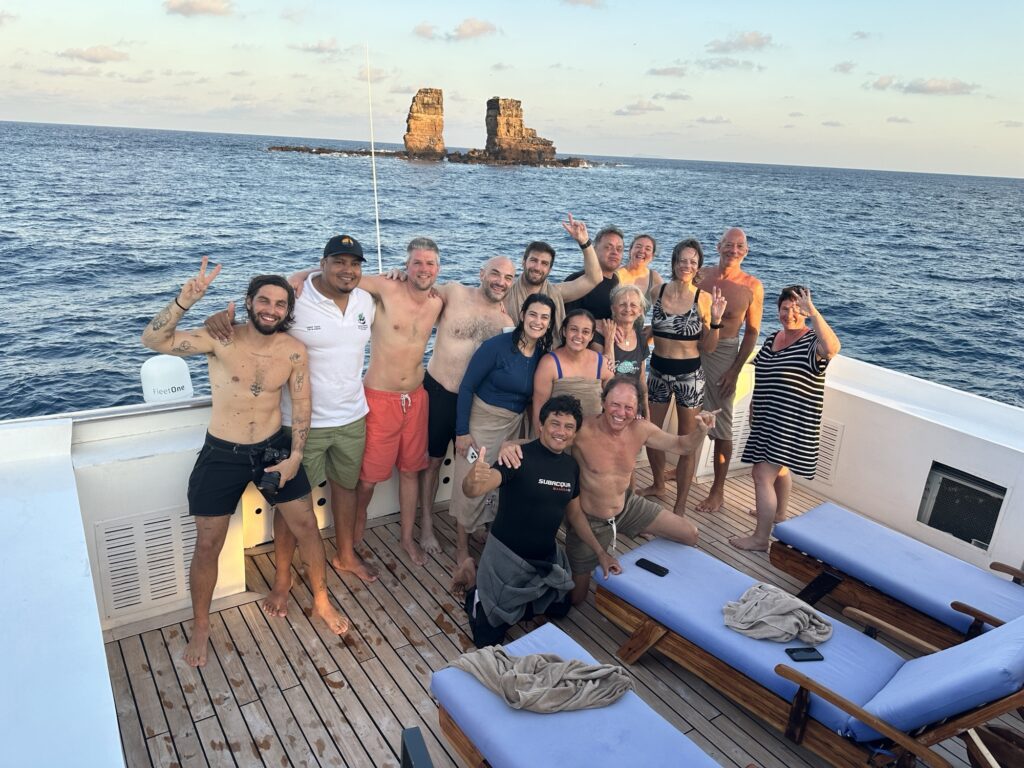
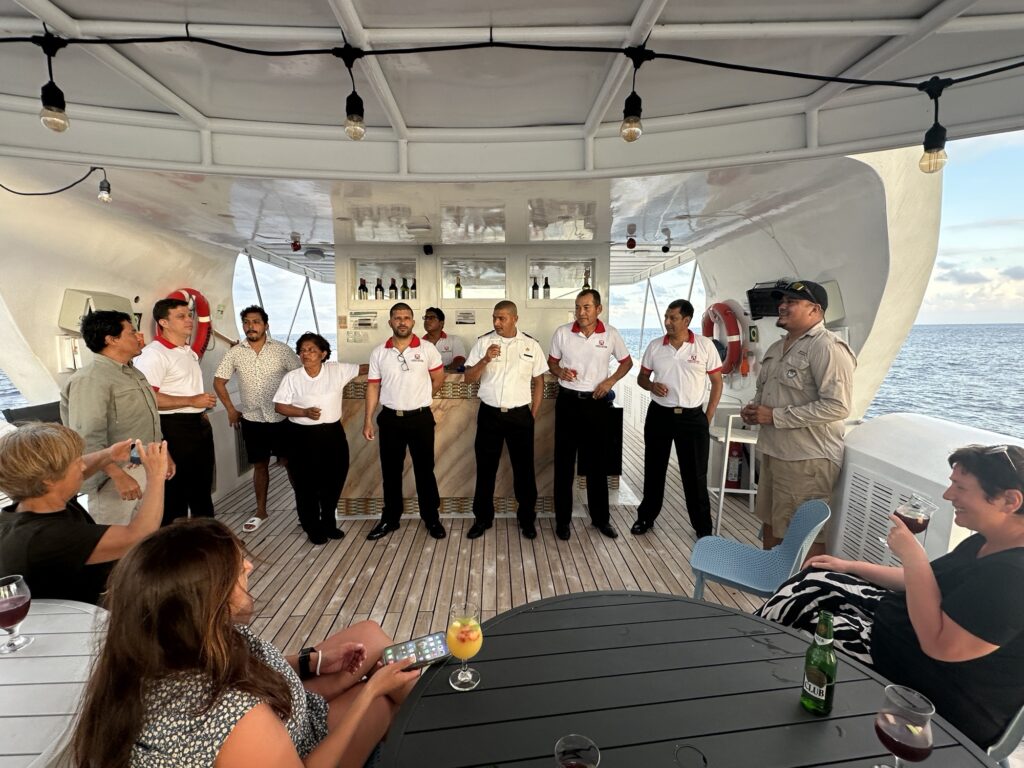
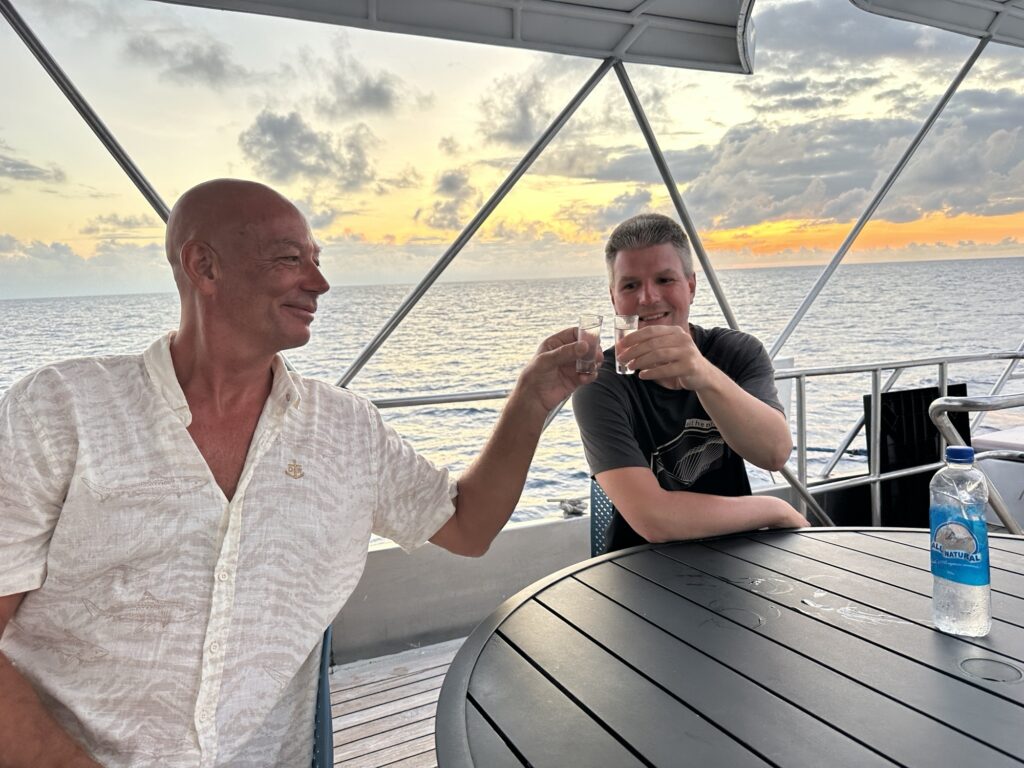
The last day was spent visiting the highlands and a tortoise ranch in Santa Cruz island, as well as spending some time in the city, Puerto Ayora. We saw the opportunity to check out how Noxoma was doing, as we had already explored these parts of the island from before.
We spent a lovely last evening with the rest of the group and the dive guides at a local restaurant, before we all went back to the boat for the last night. It was quite strange to sleep right next to where our boat was anchored.
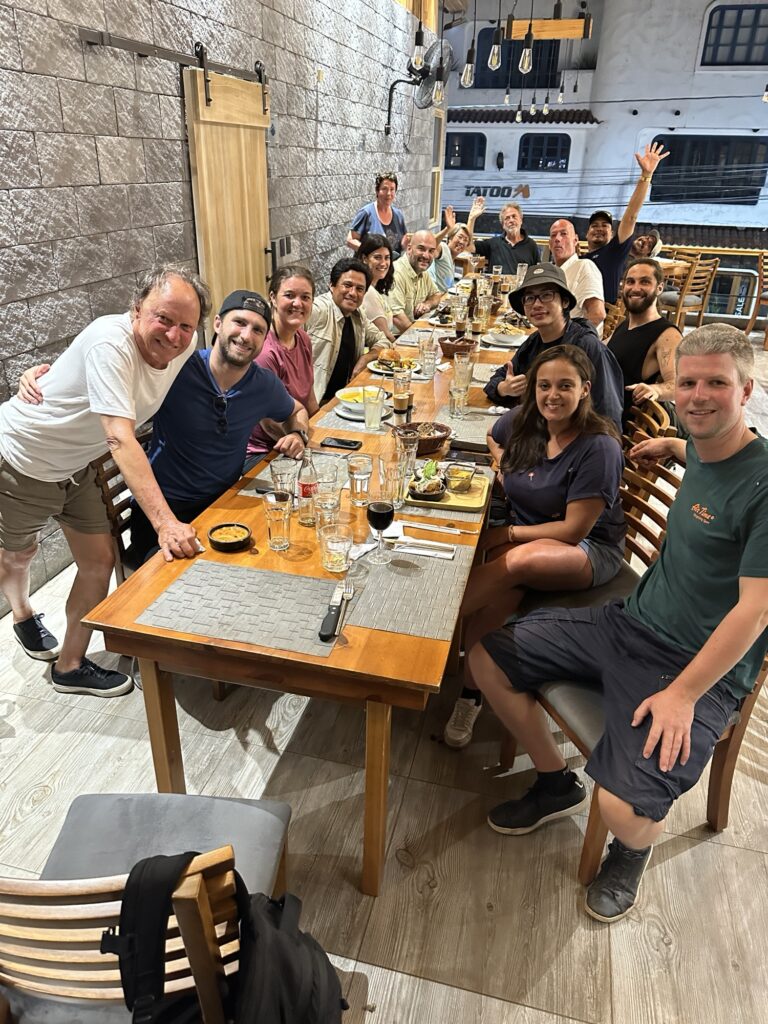
We had an awesome week and returned to Noxoma the next morning, full of experiences which will definitely take some time to digest.
After a couple of days rest, we headed off to Isla Isabela, the next island on our list!
